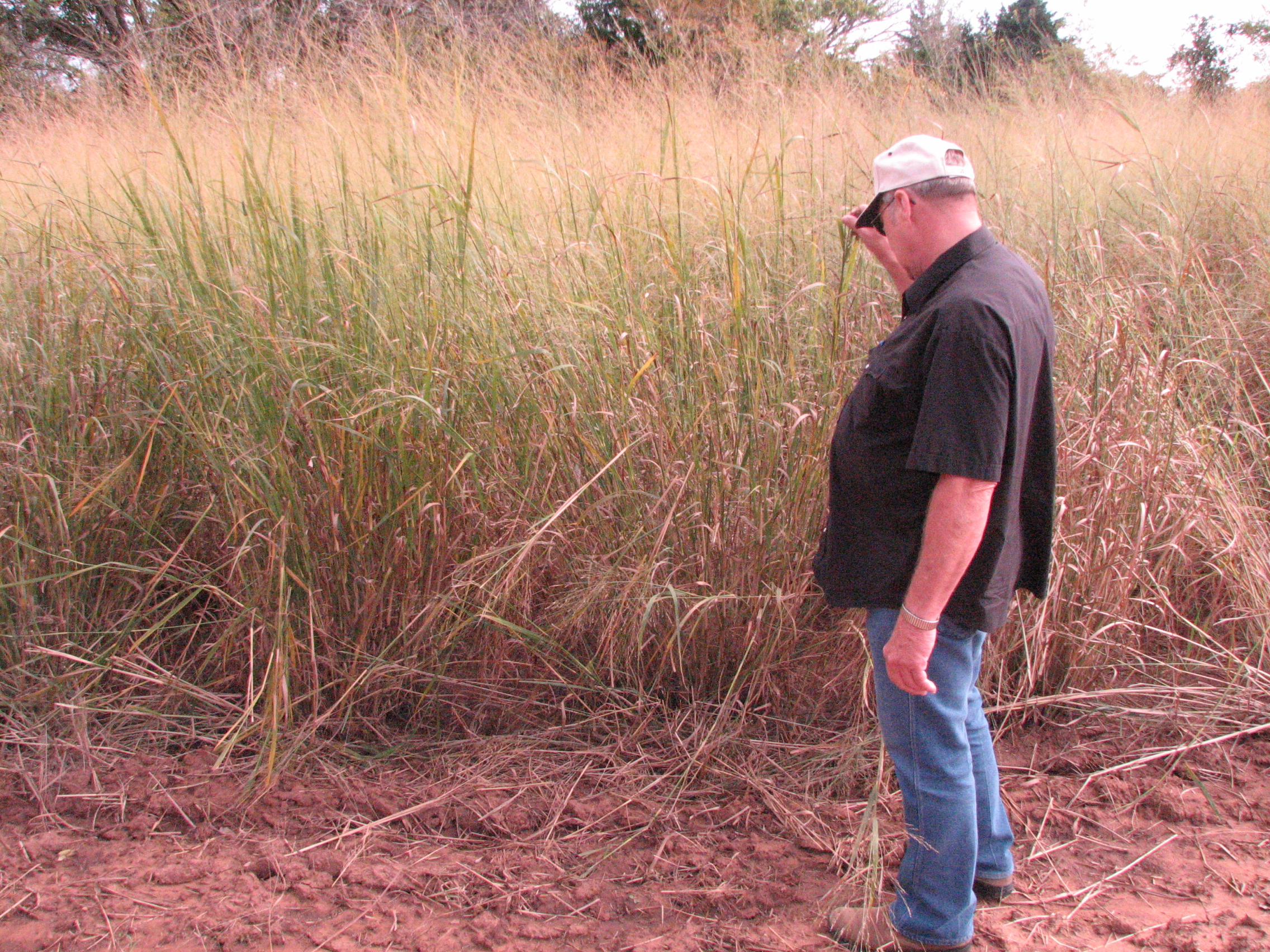Resource Library
Plant of the Week: Switchgrass biofuel
After suffering through a couple days of frozen pipes and some memorably cold weather, it is not surprising my mind wanders to heat and the fuels we use to provide it. Energy generated from ancient hydrocarbons is rapidly losing its cachet while renewable sources such as water, wind and solar (17 percent of the U. S. energy supply in 2018) are growing rapidly. In his 2006 State of the Union address, President George W. Bush spoke glowingly of switchgrass, a native grass that would play an important role in our energy future. Whatever became of switchgrass in this transition from a high carbon to low carbon economy?

Switchgrass, Panicum virgatum, is a deep-rooted, long-lived perennial grass native from eastern Nevada to Maine. This vigorous grass is variable across its wide range but mostly grows to above head-high and produces lots of biomass per unit area. In an understandable way, switchgrass is theorized to yield from 370 to 450 gallons of ethanol per acre on just so-so cropland. What a deal.
Biofuel production from plants is nothing new. At its basic level, firewood was the first biofuel. But as has been shown throughout the world, firewood production is not sustainable for large populations so we became addicted to hydrocarbons in the early years of the industrial revolution. Now, we seem to be heading towards a consensus that hydrocarbon-based energy supplies present their own challenges. We need to find a different approach.
Politics and economics have long been joined at the hip as winners and losers are chosen in the energy game. Oil prices in the 1970s went through the roof because of the Arab oil embargo (1973-1974) and then the Iran-Iraq war later that decade. By 1980, biofuels were a hot topic; Shell Oil built the Biomass Research Center on the UofA campus in Fayetteville, and federal and private money poured in to study ways of turning plant residues into a sustainable fuel supply.
Then by 1985 oil prices dropped from record highs to lows almost equal to those of the 1960s; the oil bust turned to a boom and everyone lost interest in biofuels. Out of the biofuel enthusiasm of the early 1980s, two approaches emerged as possibilities.
The direct approach – burning sawdust, waste products from logging operations, trees from abandoned orchards or garbage – was the least exciting but had the most staying power. State and federal subsidies to this kind of power generation approach were maintained until the mid-1990s and even a few private companies were established. Most of these private firms did not survive beyond the point where their subsidies ran out. In 2018, this direct approach to burning biofuels (including burning urban trash) accounts for about 2 percent of our national electrical power supply.
The fun-with-chemistry approach of converting biomass into ethanol remained a significant area of university research until a shift in thinking occurred in the mid-1990s when federal research dollars — and more importantly, subsidies — began moving away from biofuels to solar and wind energy.
Meanwhile, lead had been removed from gasoline in the 1980s, and the search was on for an “oxygenator” additive. The first choice, MBTE, didn’t suite the EPA and by 2000 it too was dropped and ethanol began to be added for that purpose. The Renewable Fuel Standards Act of 2005 and the Energy Independence and Security act of 2007 checked lots of boxes. It kept the air a bit cleaner, it perhaps marginally made us less dependent on imported oil and it made corn farmers happy because prices went up. Existing production systems could quickly gear up to produce more corn, but the technology to plant, grow and convert switchgrass biomass into ethanol was still in the “theoretical” stage of development. In theory switchgrass ethanol yields are on par with, or slightly higher than, those from corn, but it never really took off.
Using biomass to produce ethanol is probably not a great opportunity as we pivot towards renewable, carbon zero energy sources. Switchgrass would be a carbon neutral energy source (carbon uptake in photosynthesis equals carbon output in combustion) were it not for the carbon-intensive inputs (fertilization, harvesting, transportation, etc.) needed to grow the crop.
Some might question the hundreds of million dollars of research and subsidies poured into biomass research over the past decades, but such is the nature of picking winners and losers. Sometimes these investments find new life in new ways. The new RNA-based COVID-19 inoculums most of us are anxiously awaiting arose from a similar, decades-long, expensively-supported research program.
For more information about horticulture or to see other Plant of the Week columns, visit Extension’s Website, www.uaex.uada.edu, or contact your county extension agent. The Cooperative Extension Service is part of the U of A Division of Agriculture.